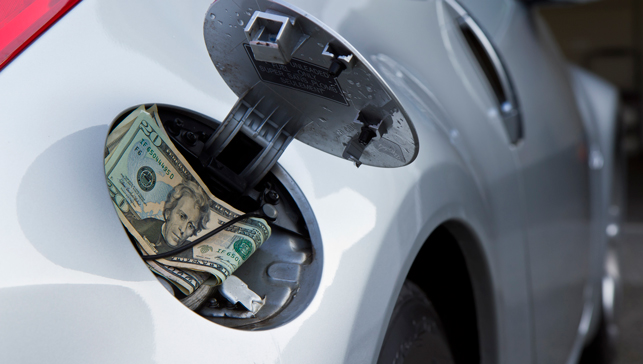Producing 269,000 barrels a day of useful fossil fuels, the El Segundo facility is second in the state only to Marathon’s Los Angeles refinery, which puts out 365,000 barrels a day, good for 22.5% of state’s capacity. The Chevron site provides 20% of motor vehicle fuel in California and 40% of the jet fuel consumed in Southern California.
While a significant loss, the overall picture is even worse. The Phillip’s 66 refinery complex in Wilmington and nearby Carson is scheduled to close. University of Southern California professor Michael Mische tells PRI that the facility received its final oil shipment last week “and will cease all petroleum production on Oct. 16,” taking 139,000 barrels per day and 8.6% of California’s capacity with it.
Engineers are also planning the termination of Valero’s 145,000-barrel-per-day (almost 9% of the state’s capacity) refinery near San Francisco. It’s scheduled to cease operations in April. The company also has a Wilmington refinery, which it is considering shuttering, as well. It produces 85,000 barrels a day, a little more than 5% of the state’s total.
In all cases, the companies have said it’s just too hard for them to do business under California’s tax-and-regulate regime.
The Chevron disaster is not isolated. It’s not even new. PBF Energy’s Martinez refinery was closed after a Feb. 1 fire damaged the facility. It was partly operational in late April, but it won’t be fully back in business until some in the fourth quarter of this year. While its down time caused gasoline prices to rise – as much as 42 cents a gallon in Northern California – it represented only 9.6% of the state’s refining capacity, about 60% of what the El Segundo site produces. The Chevron loss is going to be a bigger hit.
As of Oct. 5, Californians were paying $4.65 a gallon for regular, the highest in the nation, says the American Automobile Association. Where it will go from there won’t be known right away because the supply won’t be interrupted for at least a few days. University of California, Berkeley Energy Institute Economist Severin Borenstein told the Los Angeles Times “we could see a significant price spike if in-state inventories are limited.”
Patrick Dehaan of gasbuddy.com, initially predicted that prices could rise from 35 cents a gallon to 95 cents a gallon on the West Coast. He later said that “estimate may be conservative if it’s a unit that was hit by fire – damage could be more significant and in a worst-case scenario gas prices could easily top an average $5 or even make a run well beyond that for California.”
Mische said “the primary concern is” the length of the Chevron closure.
“The longer the duration, the greater the impact and the higher the price of gasoline will be for the hard-working California consumer,” he said. “Alarmingly, but not surprisingly, neither Gavin Newsom nor the California Energy Commission has attempted to estimate the impact on consumer prices; however, Goldman Sachs has issued a warning.”
Mische’s estimates, based on “the current public information available as of” Oct. 5 “represent the potential impact on retail pump prices as attributed solely to the Chevron refinery fire,” range from 3 to 8 cents a gallon for a low-severity, short-term stoppage to 15 to 23-cents-plus a gallon for a high-severity, long-term shutdown.
Before the Chevron incident, Mische predicted that California was on its way to $8 a gallon gasoline in 2026 due to the refinery closures. It took years of gross misgovernance to reach this point, and while policymakers have been scrambling to correct their errors, there are plenty of reasons to believe that solutions will be as forthcoming as the state’s effort to fix the twin crises of housing and homelessness.
In other words, better get ready to empty that wallet at every stop for gas.
Kerry Jackson is the William Clement Fellow in California Reform at the Pacific Research Institute and co-author of The California Left Coast Survivor’s Guide.

